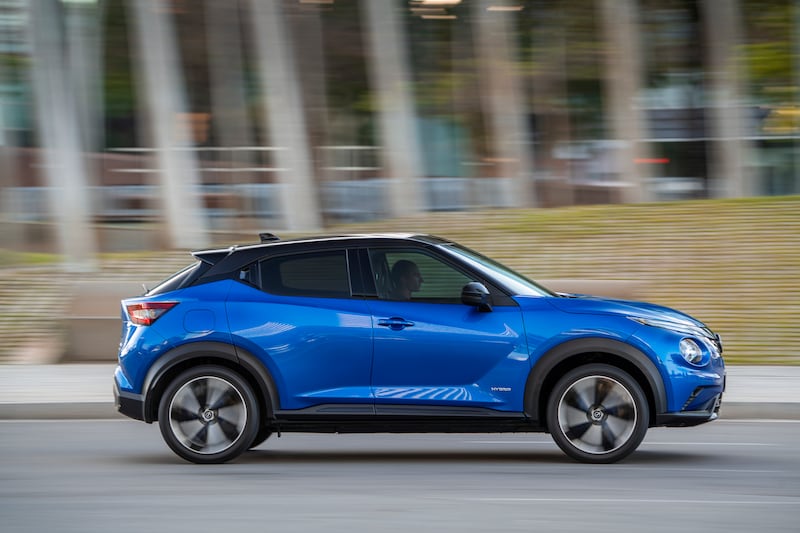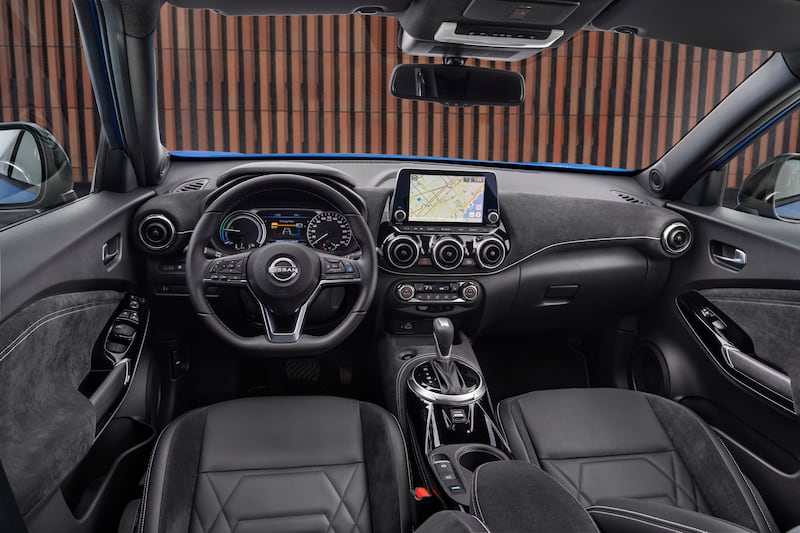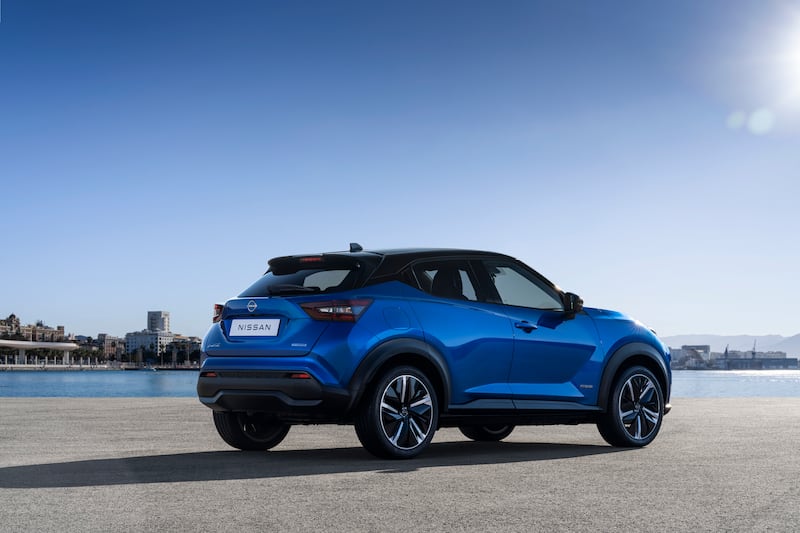Milton Keynes is a funny place. One of the few ‘planned’ towns, its grid street layout look strange to those of us used to the more wandering, skewed street layout of most cities and towns in Ireland and the UK. It gets regularly mocked for being too sterile, too lacking in charm, and generally being a bit odd.
But, on a sunny day in June, it seemed nice. The trees lining those gridded streets were in full leaf, wild flowers were growing in the central reservations between roads, and if the buildings were a bit square and regimented then at least everything looked clean, neat, and pleasant.
Equally, the Nissan Juke has a funny face. Nissan first introduced its deliberately-oddly-styled crossover in 2010, effectively inventing the small SUV market, just as it had created the larger family SUV one with the Qashqai, three years before. That first Juke was, and remains, odd indeed to look at, and can hardly be described as pretty, but it’s been a wild success — 11,000 have been sold in Ireland since.
In 2019, Nissan cleaned up the Juke’s styling a bit (and added some much-needed extra cabin space) with the launch of this second-generation model. If it’s a bit softer and less jarring to look at, it also benefits from an interior that looks much more welcoming, and is made of nicer materials, than that original.
How do you know if you are comparatively wealthy?
Work from home: ‘I am in the office twice a month, I find it very isolating and bad for my mental health’
‘Irish apartments were built for childless 20-somethings to live in while they save for a house’ – readers have their say on apartment living
How bad might things get for Tesla?

Sold initially with only a 1.0-litre turbo petrol engine, Nissan is now adding hybrid power to the Juke, co-developing a 1.6-litre petrol hybrid engine with Renault, its partner in the appropriately-named Renault-Nissan Alliance. That Alliance has been rocked in recent years by arrests, escapes, and financial turmoil but behind the scenes, the engineers have just been getting on with it — Nissan developed the hybrid system’s 1.6 engine and its electric motor, while Renault took care of the starter/generator system and the complex gearbox, which devotes four ratios to the petrol engine and two to the electric motor.
That complexity allows for cleverness — the Juke hybrid can, in traditional hybrid fashion, act with petrol power, electric power, or a mixture of both. It can also act on electric power, while the petrol engine runs in the background, charging up the compact 1.2kWh battery without actually driving the wheels at all.
Nissan claims CO2 emissions of 114g/km, decent power of 143hp, and fuel economy of 5.0-litres per 100km. Those numbers put it in the same ballpark as the Toyota Yaris Cross Hybrid, which is impressive.
Does it work, though? Actually yes — with one or two gripes. The Juke’s cabin is not the most spacious thing, even with the 2019 increase in size, and the Yaris Cross feels notably more roomy and more airy too, thanks to much larger rear windows. If you carry kids in the back of a Juke, they may well feel claustrophobic. The battery also eats into boot space, reducing it from a standard 422-litres to a just-about-adequate 354-litres. The Yaris Cross boasts 397-litres.

Fire up the Juke Hybrid and it should start in electric mode, only waking up the petrol engine once you’ve exceeded 55km/h, or gone further than about 3km. Or, if it’s a 30-degree day in central Milton Keynes, the petrol engine fires up straight away. It’s not an especially musical engine, this, but it’s mostly quiet enough. The odd gearbox does mean that, sometimes, the engine’s revving isn’t directly proportionate to the amount of power you’re asking for. Doubtless, this is an efficiency boon, but it’s damned odd on the ears. It does grind and drone slightly less than a Toyota hybrid, which is good, but avoid Sport mode as that holds on to the lower gears, and then you get all the drone you can handle.
Performance is quite sprightly, with 100km/h coming up in a reasonable 10.1 secs, and the Juke bounces along quite nicely. Actually, it bounces along rather a lot — although the hybrid system is only 66kg heavier than a petrol Juke with an automatic gearbox, the springs feel considerably stiffer (not helped by the optional 19-inch wheels of our test car). The Juke feels pleasantly agile, with a pugnacious, up-and-at-’em sensation to the steering, but that bumpy ride will become wearing in urban motoring, which is the Juke Hybrid’s whole point.
Indeed, Nissan claims that on a given urban route, you can spend 80 per cent of your time on the battery, with the engine switched off. Hence getting us to drive around Milton Keynes — not only is Milton replete with urban roads, and especially roundabouts, but Nissan actually developed the Juke Hybrid on these very streets — the company’s European technical centre at Whitley is only just up the road. Nissan has added the ‘e-pedal’ regenerative braking system from the Leaf electric car, but obviously with the modest size of the Juke’s electric motor, its effect is pretty gentle.

Economy? A bit mixed, actually. We did see 55mpg on one journey, but in general the average was closer to 45mpg, which is not bad, but hardly that great. Perhaps on a cooler day (less air conditioning) and with a bit less motorway mileage in the mix, we might have done better.
We don’t have a price tag yet, but Nissan Ireland says that the Juke will be ‘competitive’ with the Yaris Cross, so that suggests a price of around €28,000.
Like Milton Keynes, the Juke’s a bit of a funny thing. The styling — though smoother and easier than before — is still challenging, and it certainly has its mechanical quirks with this hybrid set-up. That said, like Milton Keynes, it might just be worth exploring further ...
Lowdown: Nissan Juke Hybrid
Power: 1.6-litre petrol engine and a 36kW electric motor developing 143hp and 148Nm (engine) and 205Nm (electric) of torque, driving a six-speed automatic transmission with front-wheel drive
CO2 emissions (annual motor tax) 114g/km (€190)
Fuel consumption: 5.0-litres per 100km
0-100km/h: 10.1 sec
Price: Circa €28,000 (TBC)
Our rating 3/5
Verdict: A solid hybrid choice, but needs a smoother ride and more space inside














